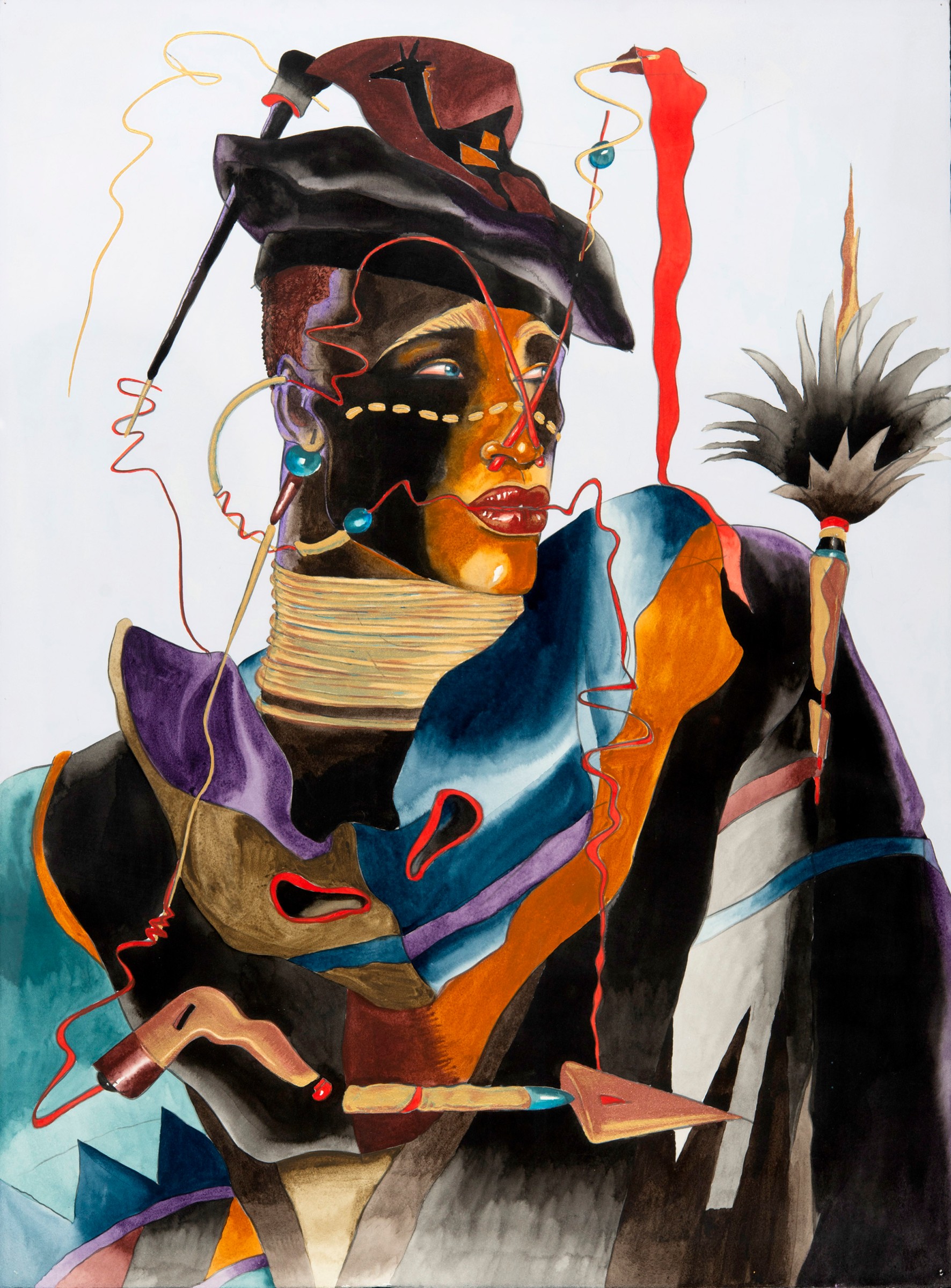Grace Jones' pioneering gender play and Afrofuturism
- Text by Miss Rosen
- Photography by Richard Bernstein (main image)

Hailing from Jamaica, Grace Jones is a true iconoclast: a rebellious pioneer who set the worlds of music, fashion, and film ablaze with aesthetics that defied categorisation, appropriation, or co-option by industries that have long cannibalised marginalised communities.
In the new exhibition at Nottingham Contemporary, Grace Before Jones: Camera, Disco, Studio, curators Cédric Fauq and Olivia Aherne offer a multifaceted portrait of the renegade who turned the mainstream upside down with her refusal to be pigeonholed by any singular quality.
Featuring 100 works by some 50 artists including Anthony Barboza, Antonio Lopez, Keith Haring, Robert Mapplethorpe, and Jean-Paul Goode, Grace Before Jones is organized into 13 sections that explore her approaches to gender, sexuality, performance, race, and cybernetics throughout her career.
“The incredibly poignant thing about this exhibition is that everything she was doing in the 1970s, ‘80, and early ‘90s is still relevant today”,” says Aherne. “It still feels so fresh and experimental, even though Grace was thinking about things like Afrofuturism back in the ‘80s, at a time when these ideas were first being developed and hashed out.”
Bringing together artworks, archival material, film, fashion, design, and music, Grace Before Jones reveals how Jones subverted and reframed Western archetypes of Black women. “Grace played with non-binary, not being overtly feminine or masculine, and not feeling like she needed to define or speak on those provocations, but just to inhabit them,” Aherne says.

Antonio Lopez, LUI Magazine (cover), Grace Jones, 1979, © The Estate of Antonio Lopez and Juan Ramos
Jones subverted paradigms of Western cultural hegemony from the very start. Age 18, at the beginning of her career in the mid-1960s, Jones moved to New York City to model with the prestigious Wilhelmina Modelling agency. Her dark skin, African facial features, and natural hair didn’t fit the aesthetics of Blackness that white America sought to promote. So, Jones decamped to Paris in 1970, where her striking looks made her a darling among a radical new group of ready-to-wear fashion designers, including Yves Saint Laurent, Claude Montana, and Kenzo.
Jones began collaborating with Afro-Puerto Rican artist Antonio Lopez, and became affectionately known as one of “Antonio’s Girls,” along with her roommates, fellow models Jerry Hall and Jessica Lange. The women were regulars at Club Sept, Paris’s hottest discotheque, introducing a new era of sex, fashion, and disco to the jet set. Nightclubs quickly became an ideal setting for Jones, who transformed the dance music scene. She produced disco and dub classics like ‘La Vie en Rose,’ ‘Pull up to the Bumper,’ and ‘My Jamaican Guy’ throughout the 1970s and ‘80s.
Her creativity, innovation, and spontaneous energy made her the perfect muse for artists such as Warhol, Haring, and Mapplethorpe. “Grace challenged people,” Aherne states. “She pushed everyone who was around her to think differently about images that they were producing whether that be returning the gaze in photography or speaking back in her music.”
“There’s something important about taking a cue from that spirit today and not feeling like we have to explain ourselves or occupy certain categories.”

Ming Smith, Untitled (Grace Jones Ballerina), 1975, courtesy of the artist and Jenkins Johnson Gallery, New York and San Francisco

Richard Bernstein, Grace Jones Mask for Warm Leatherette, 1980, courtesy The Estate of Richard Bernstein

Richard Bernstein, October issue of Andy Warhol’s Interview Magazine, 1984, courtesy The Estate of Richard Bernstein

Richard Bernstein, Grace Jones photographs for On Your Knees, 1979. Eric Boman courtesy of The Estate of Richard Bernstein

Antonio Lopez, Personal Study, Angelo Colon, 1983 © The Estate of Antonio Lopez and Juan Ramos
Grace Before Jones: Camera, Disco, Studio runs until 2 January 2021 at Nottingham Contemporary.
Follow Miss Rosen on Twitter.
Enjoyed this article? Like Huck on Facebook or follow us on Twitter.
You might like

“Humanity’s big threat is our disconnect from nature”: Craig Richards and Chris Levine in conversation
Lighting up — With Houghton Festival collaborating with artist Chris Levine in its most recent edition, we sat down with the light artist and the festival’s creative director Craig Richards to chat about their new installations, and the role of art and music in tumultuous times.
Written by: Isaac Muk

Three heart wrenching poems from Gaza
Writings that narrate — With Gaza’s population facing starvation, we are handing over our website to Yahya Alhamarna, a displaced poet and student in Gaza, who shares some of his recent poetry, and explains why writing is so important to him.
Written by: Yahya Alhamarna

An insider’s view of California’s outdoor cruising spots
Outside Sex — Daniel Case’s new photobook explores the public gay sex scene, through a voyeuristic lens, often hidden just below plain sight.
Written by: Miss Rosen

Daido Moriyama’s first four photobooks to be published in English for the first time
Quartet — A new anthology collates Japan, A Photo Theater, A Hunter, Farewell Photography and Light and Shadow, alongside journal entries and memoranda.
Written by: Isaac Muk

Meet Lady Pink, the ‘First Lady’ of graffiti
Miss Subway NYC — As a leading writer and artist in a man’s world, Sandra Fabara has long been a trailblazer for girls in underground art. Now, her new show touches on her legacy, while looking to the future.
Written by: Isaac Muk

Will internet age verification actually work?
VPN Summer — With the Online Safety Act coming into force over the weekend, the UK woke up to find pornography, but also any content deemed “harmful” hidden behind an ID wall. But young people are far too tech savvy to be deterred, explains newsletter columnist Emma Garland, who also warns of the dangers of mass data harvesting.
Written by: Emma Garland

